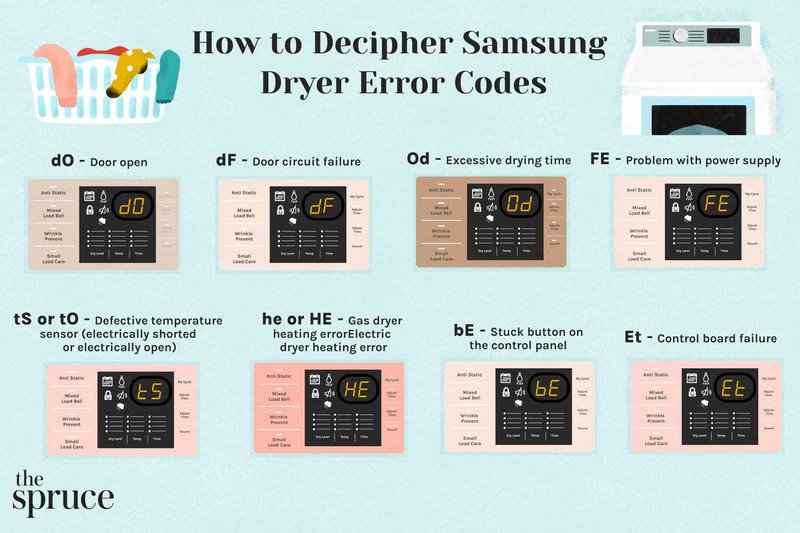
Understanding the SE Error Code
So, what exactly is this “SE” error code all about? In the world of Samsung dryers, “SE” typically indicates a problem with the sensor dry function. Think of it as your dryer’s internal compass that guides it through the drying process. When everything’s working smoothly, the sensor helps the dryer determine how long it needs to run to get your clothes perfectly dry. But when something’s off, your dryer sends up the “SE” signal as a cry for help.
Imagine driving a car with a malfunctioning GPS; you’d have a hard time reaching your destination. Similarly, when the sensor isn’t functioning correctly, your dryer can’t effectively judge the drying time, which can lead to damp clothes or, worse, overheating. This error could be due to a variety of reasons, including a faulty moisture sensor, obstructed air vents, or even electrical glitches.
So, what do you do when this error pops up? First, try not to panic. The “SE” code doesn’t necessarily mean your dryer is on its last legs. Sometimes, all it takes is a little troubleshooting to get things back on track. However, if you’ve tried everything and that pesky code won’t go away, it might be time to bring in a professional.
DIY Troubleshooting Before Calling a Technician
Before you reach for your phone to call a technician, there are a few things you can try on your own to resolve the “SE” error code. Think of it like this: sometimes a simple reboot is all your device needs. Start by turning off your dryer and unplugging it from the power source for a few minutes. This process can reset the system and might just clear up that error code.
Next, check the moisture sensor bars inside the drum. These bars can sometimes get crusty from fabric softeners or detergent residue, making it difficult for them to accurately sense moisture levels. Gently clean these bars with a soft cloth and a bit of vinegar, much like you’d clean a pair of glasses smeared with fingerprints. Often, a good cleaning is enough to solve the problem.
Don’t forget to examine the lint filter and vent system, as blockages here can also trigger the SE code. It’s like trying to breathe through a straw — when airflow is restricted, problems arise. Clear any obstructions to ensure your dryer is ventilating properly. If you’ve taken these steps and the error is still there, it could be an indicator of a more serious internal issue.
When to Call in the Experts
Alright, so you’ve tried all the basic fixes and that stubborn SE code is still glaring at you. What now? This is the moment when calling in a professional might be your best bet. A skilled technician has the tools and knowledge to diagnose problems that are hidden from plain view — kind of like how a mechanic can pinpoint what’s wrong with your car engine without taking it apart.
One key reason to get a professional involved is safety. Dealing with electrical components can be risky if you’re not familiar with them. Plus, professionals have the experience to efficiently tackle the problem without causing further damage. Think of it as calling a lifeguard when you’re caught in a rip current; sometimes you need a little expert assistance to get back to shore safely.
Keep in mind that leaving underlying issues unresolved can lead to bigger problems down the road. Ignoring the SE error might cause other components to wear out prematurely, leading to costly repairs or even a full appliance replacement. When a quick call to a technician can save you from that, it’s worth considering.
Preventing Future Issues
Now that you’re equipped with the know-how to handle the SE error, let’s talk prevention. Much like regular oil changes keep your car running smoothly, consistent maintenance can extend your dryer’s lifespan and keep those pesky error codes at bay. Start by making it a habit to clean the lint filter after every load. Consider it like brushing your teeth daily to prevent cavities.
Regularly inspect and clean the dryer vents to ensure unobstructed airflow. You can even schedule annual professional maintenance checks as a proactive measure, similar to how you might visit a doctor for a yearly check-up. These visits can catch little issues before they turn into big headaches.
Lastly, be mindful of what you’re tossing into your dryer. Heavy items, excessive loads, or wet clothes can strain the machine. By treating your dryer with a little care and attention, you can keep it happily humming along for years to come without that annoying SE code making a return appearance.